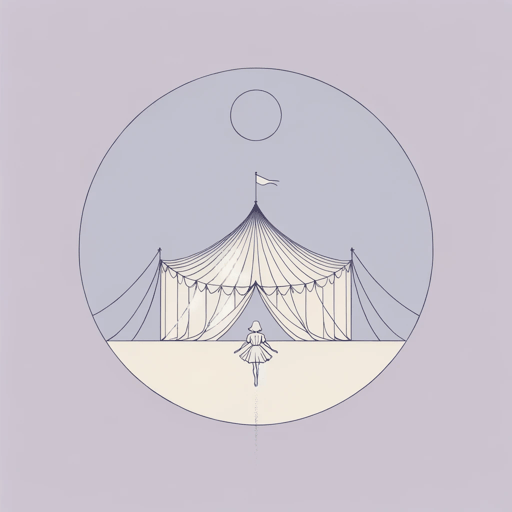49 pages • 1 hour read
Ellen Marie WisemanThe Life She Was Given
Fiction | Novel | Adult | Published in 2017A modern alternative to SparkNotes and CliffsNotes, SuperSummary offers high-quality Study Guides with detailed chapter summaries and analysis of major themes, characters, and more.
Background
Historical Context: The Circus as Entertainment in Early- to Mid-20th-Century America
The modern circus draws inspiration from many forms of entertainment, including the Circus Maximus of ancient Rome, where horse-drawn chariots raced along a large track and gladiators battled wild animals, and Philip Astley’s horseshows in the Royal Amphitheatre in 18th-century England. It wasn’t until the 18th century that performances associated with the circus, including acrobatics, clowning, and menageries, came together under one roof to form the entertainment audiences know today. In the 19th century, important Industrial Revolution inventions like the steam engine helped to turn the circus into a wildly popular attraction, as trains could carry the show from town to town.
For the better part of a century, the circus reigned as the most popular form of entertainment in the US. After the financial crash of 1907, two major circus companies merged, creating the Ringling Bros. and Barnum & Bailey Circus, dubbed “The Greatest Show Earth,” which toured as two separate acts for over a decade and enjoyed a monopoly. Entire towns would celebrate the circus arriving in town, with schools shutting down and banks closing so that townspeople could attend parades and watch the big top tent being set up. As Janet Davis explains, “for isolated American audiences, the sprawling circus collapsed the entire globe into a pungent, thrilling, educational sensorium of sound, smell and color, right outside their doorsteps” (Davis, Janet M.
Related Titles
By Ellen Marie Wiseman
Featured Collections
Animals in Literature
View Collection
Beauty
View Collection
Challenging Authority
View Collection
Class
View Collection
Class
View Collection
Coming-of-Age Journeys
View Collection
Dramatic Plays
View Collection
Fear
View Collection
Hate & Anger
View Collection
Loyalty & Betrayal
View Collection
Memory
View Collection
Mothers
View Collection
Power
View Collection
The Best of "Best Book" Lists
View Collection
The Power & Perils of Fame
View Collection
Valentine's Day Reads: The Theme of Love
View Collection


